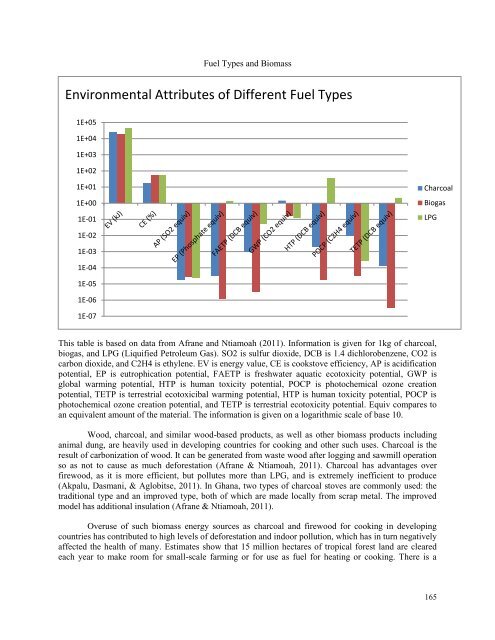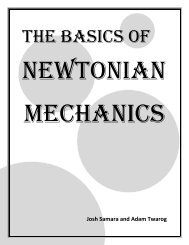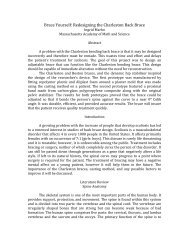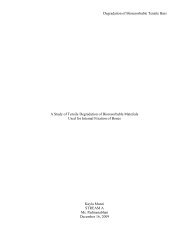Got Food? - the Scientia Review
Got Food? - the Scientia Review
Got Food? - the Scientia Review
Create successful ePaper yourself
Turn your PDF publications into a flip-book with our unique Google optimized e-Paper software.
Fuel Types and Biomass<br />
Environmental Attributes of Different Fuel Types<br />
1E+05<br />
1E+04<br />
1E+03<br />
1E+02<br />
1E+01<br />
1E+00<br />
1E-01<br />
Charcoal<br />
Biogas<br />
LPG<br />
1E-02<br />
1E-03<br />
1E-04<br />
1E-05<br />
1E-06<br />
1E-07<br />
This table is based on data from Afrane and Ntiamoah (2011). Information is given for 1kg of charcoal,<br />
biogas, and LPG (Liquified Petroleum Gas). SO2 is sulfur dioxide, DCB is 1.4 dichlorobenzene, CO2 is<br />
carbon dioxide, and C2H4 is ethylene. EV is energy value, CE is cookstove efficiency, AP is acidification<br />
potential, EP is eutrophication potential, FAETP is freshwater aquatic ecotoxicity potential, GWP is<br />
global warming potential, HTP is human toxicity potential, POCP is photochemical ozone creation<br />
potential, TETP is terrestrial ecotoxicibal warming potential, HTP is human toxicity potential, POCP is<br />
photochemical ozone creation potential, and TETP is terrestrial ecotoxicity potential. Equiv compares to<br />
an equivalent amount of <strong>the</strong> material. The information is given on a logarithmic scale of base 10.<br />
Wood, charcoal, and similar wood-based products, as well as o<strong>the</strong>r biomass products including<br />
animal dung, are heavily used in developing countries for cooking and o<strong>the</strong>r such uses. Charcoal is <strong>the</strong><br />
result of carbonization of wood. It can be generated from waste wood after logging and sawmill operation<br />
so as not to cause as much deforestation (Afrane & Ntiamoah, 2011). Charcoal has advantages over<br />
firewood, as it is more efficient, but pollutes more than LPG, and is extremely inefficient to produce<br />
(Akpalu, Dasmani, & Aglobitse, 2011). In Ghana, two types of charcoal stoves are commonly used: <strong>the</strong><br />
traditional type and an improved type, both of which are made locally from scrap metal. The improved<br />
model has additional insulation (Afrane & Ntiamoah, 2011).<br />
Overuse of such biomass energy sources as charcoal and firewood for cooking in developing<br />
countries has contributed to high levels of deforestation and indoor pollution, which has in turn negatively<br />
affected <strong>the</strong> health of many. Estimates show that 15 million hectares of tropical forest land are cleared<br />
each year to make room for small-scale farming or for use as fuel for heating or cooking. There is a<br />
165
















